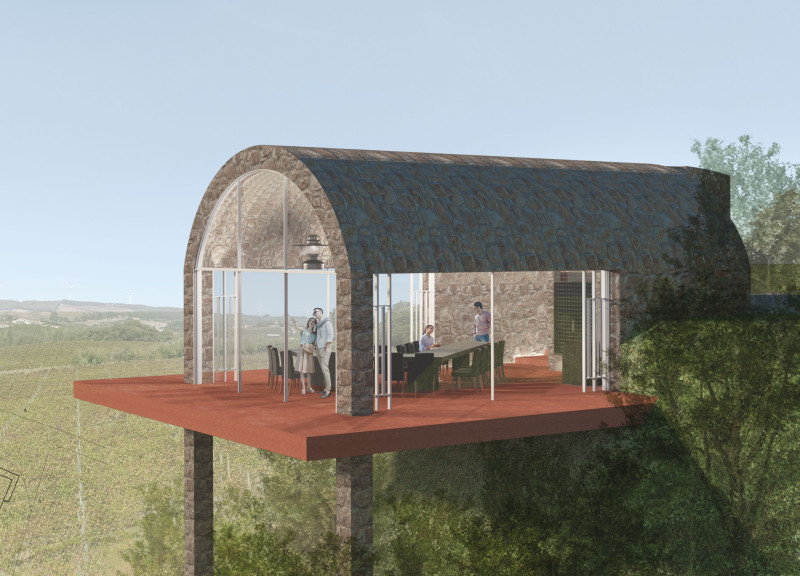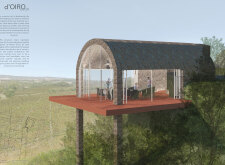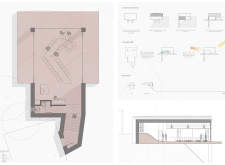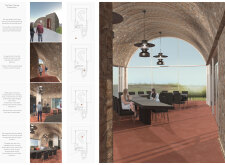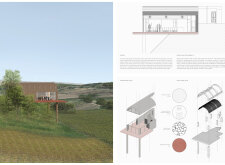5 key facts about this project
The design forms a connection to the local landscape, capturing views of the vineyard and hills. With an arched roof reminiscent of wine barrels, the structure not only enhances internal volume but also aligns with the cultural symbolism of winemaking. The use of locally sourced materials is a key component, ensuring that the architecture harmonizes with its environment.
Unique Design Approaches
One of the project's distinct characteristics is its elevation, which allows for unobstructed views and a stronger visual connection to the vineyard. The use of large glass windows facilitates natural light and transparency, enhancing the users' experience of the landscape. Moreover, the design emphasizes sustainability through the selection of materials that require minimal environmental impact, including local stone and natural wood.
The central communal table is a significant design element, encouraging interaction among guests. Its adaptive shape accommodates different events, enabling versatility in its function while maintaining a cohesive aesthetic. Terracotta tiles used in the flooring contribute to thermal regulation, connecting the building's comfort with traditional materials used in the region.
Architectural Features and Functional Details
Key architectural features include expansive glass panels that blur the boundaries between interior and exterior spaces, creating an inviting atmospherics. The incorporation of natural ventilation principles drives energy efficiency, reducing reliance on artificial climate control. The layout promotes fluid movement, ensuring ease of access to wine storage areas, tasting stations, and communal spaces.
The architecture reflects an understanding of both cultural context and user experience. The project stands out not only for its visual quality but also for effectively serving its purpose as a wine tasting venue. The integration of traditional and modern design elements showcases a comprehensive approach to creating a functional yet aesthetically pleasing structure.
For a deeper understanding of the d'Oiro Wine Tasting Room, we encourage readers to explore architectural plans, sections, and designs that detail its innovative concepts and execution. These elements provide valuable insights into the thought processes and architectural ideas driving this project.


